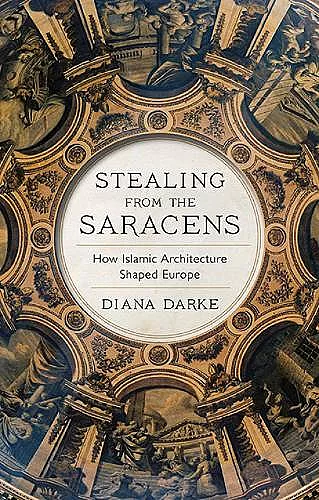Stealing from the Saracens
How Islamic Architecture Shaped Europe
Format:Hardback
Publisher:C Hurst & Co Publishers Ltd
Published:20th Aug '20
Currently unavailable, our supplier has not provided us a restock date
This hardback is available in another edition too:
- Paperback£17.99(9781911723479)

Against a backdrop of Islamophobia, Europeans are increasingly airbrushing from history their cultural debt to the Muslim world. But this legacy lives on in some of Europe’s most recognisable buildings, from Notre-Dame Cathedral to the Houses of Parliament.This beautifully illustrated book reveals the Arab and Islamic roots of Europe’s architectural heritage. Diana Darke traces ideas and styles from vibrant Middle Eastern centres like Damascus, Baghdad and Cairo, via Muslim Spain, Venice and Sicily into Europe. She describes how medieval crusaders, pilgrims and merchants encountered Arab Muslim culture on their way to the Holy Land; and explores more recent artistic interaction between Ottoman and Western cultures, including Sir Christopher Wren’s inspirations in the ‘Saracen’ style of Gothic architecture.Recovering this long yet overlooked history of architectural ‘borrowing’, Stealing from the Saracens is a rich tale of cultural exchange, shedding new light on Europe’s greatest landmarks. A New Statesman Book of the Year 2020, chosen by William Dalrymple.A BBC History Magazine Best Book of 2020.
‘An exhilarating, meticulously researched book that sheds light on centuries of borrowing, tracing the roots of Europe’s major buildings.’
-- The Guardian‘Another brilliant challenge to Islamophobes everywhere, skilfully telling the architectural counterpart of Moller’s tale, and showing how much Gothic architecture drew on the forms and innovations of Arab architects and mathematicians.’
-- William Dalrymple in The Spectator (Book of the Year 2020)‘This persuasive study argues that northern Europe’s greatest gothic buildings are deeply indebted to the Arab world … [it is] a useful reminder of the interconnectedness of civilisation.’
-- The Observer'An extraordinarily ambitious work, part cri de coeur and part textbook on Islamic architecture and its influence on the West.’
-- Times Literary Supplement'[A] fascinating book. Revelatory [and] eye-opening.'
-- Los Angeles Times'Intriguing and eye-opening.'
-- Asian Review of Books'As exhilarating as it is learned, this splendidly illustrated book shows how our cultures--including our religious cultures--interact and interweave in ways that challenge all kinds of assumptions we might make about our history. By studying our past, Darke poses essential questions about the possibility of a shared and humane civilisation in the future.'
-- Rowan Williams, former Archbishop of Canterbury'Diana Darke writes about Syria and its cultural heritage with love, clarity and authority.'
-- Sir Michael Palin‘Fascinating… . Darke embeds her descriptions of architecture in lively, down-to-earth analysis of the social, economic, and cultural conditions under which the churches and mosques were built.’
-- The Jordan Times'In this original and enlightening book, Darke takes us on a journey of discovery. From the churches of the "Dead Cities" of Syria to Notre-Dame de Paris, she guides us while sharing her passion for the connections between the cultures of the Middle East and those of Europe.'
-- Venetia Porter, Curator of Islamic and Contemporary Middle East Art, British Museum'Lively and provocative, this book takes us from Christopher Wren through an exploration of how ideas from the Islamic Middle East profoundly influenced the architecture of Western Europe. Darke's enthusiasm and love for all things Syrian is apparent on every page. A great read for anyone seeking an alternative viewpoint.'
-- Hugh Kennedy, Professor of Arabic, SOAS University of London'A fascinating account of the way in which architectural techniques, ideas and aesthetics are actively and explicitly shared between people, indifferently as to whether they happen to be friends or enemies. Darke's book reveals much that is surprising about the canon of European architecture, telling us how human relations are inevitably shared and forgotten only at their mutual peril.'
-- Faisal Devji, Professor of Indian History, University of OxfordISBN: 9781787383050
Dimensions: unknown
Weight: unknown
474 pages